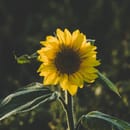October 11, known as National Coming Out Day (NCOD), is an annual LGBTQ awareness day that was first celebrated in the U.S. in 1988. Psychologist Robert Eichberg and political leader Jean O’Leary inaugurated the national celebration, O’Leary the head of the National Gay Rights Advocates in Los Angeles at the time. Eichberg and O’Leary were inspired to combat anti-LGBTQ sentiments by celebrating the bravery observed by those who have come out. The following quote by Dr. Eichberg captures his and O’Leary’s motivation for NCOD:
“Most people think they don’t know anyone gay or lesbian, and in fact, everybody does. It is imperative that we come out and let people know who we are and disabuse them of their fears and stereotypes.” -Dr. Eichberg, 1993
NCOD was celebrated in 1990 by all 50 states and seven other countries. Participation in the celebration continues to grow and be observed today. To honor National Coming Out Day, I want to share a few influential past and current artists, musicians, and poets part of the LGBTQ+ community.
1. Bessie Smith (1894-1937)
Image provided by Carl Van Vechten, restored by Adam Cuerden
Bessie Smith was an American, bisexual blues singer in the 1920s and 30s. Her influence on following blues and jazz vocalists was and is undeniable, and her influence on music continues today. She revolutionarily sought to expand African-American identity beyond domesticity and conformity, her music circulating around themes of sexual expression and unapologetic happiness and independence.
2. Tove Jansson (1914-2001)
Image Provided by Hans Gedda
Tove Jansson was a Finnish author, novelist, painter, illustrator, and comic strip author. She is most well-known for her children’s book and comic strip series, The Moomins. Since introducing the world to her beloved hippopotamus-resembling characters, her books have had several televised animated adaptations. Tove’s lifelong partner Tuulikki Pietilä was also a Finnish artist, specializing in graphic arts.
3. Arca (1989-present)
Image Provided by Imnotcmjames – Own work, CC
Arca is a Venezuelan record producer, songwriter, singer, mixing engineer, performance artist, and DJ. She is non-binary, going by the pronouns it or she, and she has worked with big-name artists such as Björk, Kanye West, FKA Twigs, Kelela, and Frank Ocean. She produces and writes electronic, experimental IDM, experimental pop, and industrial hip-hop music.
4. Audre Lorde (1934-1992)
Image Provided by K. Kendall
Audre Lorde was an American writer, feminist, womanist, librarian, and civil rights activist. Her poems and prose evolve heavily around issues concerning civil rights, feminism, lesbianism, and black female identity. She demonstrates the significance of intersectionality among sexuality, gender, race, and social class. Her works and influence are still very relevant to today’s current political climate.
5. James Baldwin (1924-1987)
Image Provided by Allan Warren, Own work, CC
James Baldwin was an American novelist, playwright, and activist. His collection of essays Notes in a Native Son (1955) revolves around themes of race, sexuality, and class. His second novel Giovanni’s Room (1956) explores the integration of African American, gay, and bisexual men into American society. Baldwin was close friends with other prominent Black artists and writers such as Nina Simone, Langston Hughes, and Maya Angelou.
6. Joy Harjo (1951-present)
Image Provided by Library of Congress Life
Joy Harjo is a Native American poet, musician, and author. She is the first Native American United States Poet Laureate. She is also an activist for women’s rights and equality and uses her poetry to represent the voice of the indigenous people. Her art emphasizes the inherent interconnectedness between humanity and nature and argues for the unity of all living things.
These six individuals represent only a small portion of influential past and current LGBTQ+ artists. Some of the most revolutionary art and literature have been created by members of the LGBTQ+ community. It is also important to acknowledge that although National Coming Out Day is being more widely celebrated, many individuals live in environments where coming out could be potentially dangerous or violent. Homophobia and transphobia continue to oppress marginalized voices, and it is important that these voices are recognized and salvaged within the predominantly hetero- and cis-normative works of art and literature.


